Photo Courtesy of Great Lakes Shipwreck Museum
Whitefish Point, on Lake Superior’s “Shipwreck Coast,” is long on tales of mariners lost, natural wonders and spectacular skies, and short on hustle and bustle.
On a sunny summer afternoon, the parking lot at the Great Lakes Shipwreck Museum is filled with vehicles sporting license plates from more than two dozen states and a couple of Canadian provinces. But they don’t tell the whole story of who’s exploring the site.
“We get visitors from all over the planet,” says Corey Adkins, communications and content director for the non-profit museum at Whitefish Point. Given the remote location at the most northern point of Michigan’s eastern Upper Peninsula, “It’s curiosity, and maybe even a sense of adventure” that draws the crowds, says Adkins. “You have to want to be here.”
The museum is an 11-mile drive north of the hamlet of Paradise, located at the top of the peninsula that shapes the natural harbor of Whitefish Bay. Every boat traveling to and from the Soo Locks, the navigational link between Lake Superior and Lake Huron, passes Whitefish Point and the 80-mile stretch of shoreline westward known as the “Shipwreck Coast.” It earned its ominous name because it’s the final resting place of more than 200 vessels. Many of the lost craft are yet to be located, but the Great Lakes Shipwreck Historical Society, with its 47-foot research vessel David Boyd, continues to seek out shipwrecks. In 2021, the team found nine ships, including the 172-foot schooner-barge Atlanta, which sank in 1891. Experienced recreational divers can explore 29 wrecks, at depths from 10 to 270 feet, that are protected by the Whitefish Point Underwater Preserve.
Best known among Great Lakes shipwrecks is the SS Edmund Fitzgerald, the ore carrier that went down in a fierce storm on November 10, 1975, 17 miles northwest of Whitefish Point. Colossal waves and gale force winds certainly contributed to the loss, but there’s no conclusive explanation for what broke the boat in two and sent it, and all 29 crew members, 535 feet beneath the surface.
In 1995, an expedition retrieved the bell of the Fitzgerald and replaced it with a replica bearing the names of the lost men. The original bell is prominently displayed in the dramatically lit Shipwreck Museum, where exhibits and artifacts tell the somber stories of several wrecks. Catch the museum’s short film and additional exhibits in the Surfboat House, Navy Radio Building and Lightkeeper’s Quarters adjacent to the active beacon. The first lighthouse at the site was built in 1849 and was replaced in 1861 by the current tower, which is the oldest operating light on Lake Superior.
After touring the museum buildings, stroll the boardwalk to the beach, where rockhounds search for agates and others watch for passing freighters, or contemplate the majesty of Superior and what lies beneath.
 Lighthouses and Yooperlites
Lighthouses and Yooperlites
Michigan has more lighthouses than any other state, and two are within close proximity of the tower at Whitefish Point. Southeast of Paradise in Brimley, the first Point Iroquois light, dating to 1871, served as a signal for freighters at the Soo Locks. It now operates as a museum. To the west of Whitefish Point, the remote Crisp Point Lighthouse is a bucket list destination for light lovers. Ellen Eskola Kehoe and Nancy Musser made the trek as part of a self-guided Great Lakes lighthouse tour. After a long, slow, 18-mile drive on a gravel road, they reached the isolated light and climbed the 58-foot tower for views that Kehoe describes as “breathtaking.”
“It was so worth it,” she says. “It was the crowning achievement of our trip.”
Early this summer, Jan Hull Sartorius made her first visit to Whitefish Point with her son, Brian, and his children, ages 10 and 11. “It’s a different world,” she says of this corner of the U.P. “The kids learned to fish. We had a picnic lunch on the beach.”
A highlight was their search for fluorescent sodalite, which looks like a plain gray rock but emits an orange glow when hit with a UV light. In 2017 a local rock collector, Erik Rintamaki, found the first specimens when he was out at night searching for fluorescing agates. He discovered the glowing rocks and named them Yooperlites (U.P. residents call themselves Yoopers). They now draw throngs armed with black lights to Lake Superior’s shore (though it’s important to note that rock collecting isn’t permitted at Whitefish Point). The Sartorius family, after taking in a spectacular sunset and star show from the beach, was rewarded on their hunt for the glittering rocks.
“It was just beautiful,” Sartorius says of the overall experience. “Such a peaceful trip.”
 Connect with nature
Connect with nature
At her gallery and gift shop in Paradise, photographer Frances Czapski meets visitors who come to the area because of its wilderness qualities, and a surprising number who, she says, “Just stumble upon it.” Many say they cannot shake their impressions of Whitefish Point, and they just have to return. Czapski identifies with that.
Growing up, Czapski’s family visited the area every summer and, she says, “I always wondered what it would be like to live year-round in Paradise. I felt such a great connection to the natural world.”
The self-taught photographer is fulfilling her dream by selling prints, greeting cards, jigsaw puzzles and other gifts carrying her images.
“I love exploring the area with my camera,” she says. “Looking through the lens, I have been forced to slow down. I love that aspect of it, being able to get out, disconnect, listen to the lake, connect with nature.”
Czapski notices a trend of visitors staying longer in one place and getting to know it.
“There’s great value in seeing fewer places but experiencing them more,” she says. “Just to be out there in nature, being inspired by the intensity of Lake Superior and the remoteness of the area. You can get lost for hours and wander; just let time go. Not have a connection to technology, because it doesn’t always work. I think that’s a positive.”
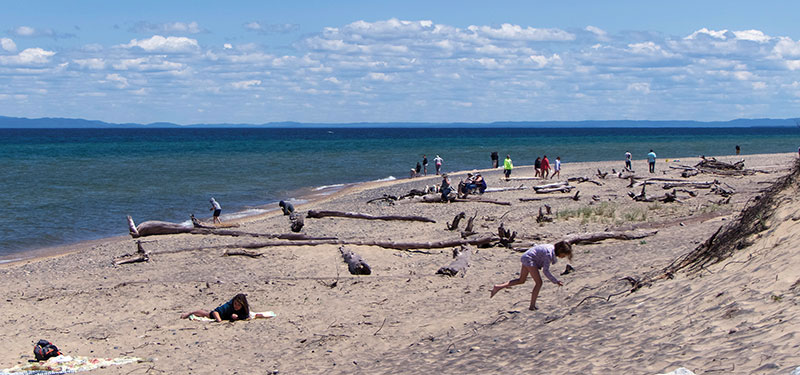
Photo by Kath Usitalo
Above Photo Courtesy of Tahquamenon Falls Facebook
Photos by Kath Usitalo (left); Crisp Point Lighthouse (right)
 Birds, berries and root beer Falls
Birds, berries and root beer Falls
In addition to its nautical history, Whitefish Point is an important stop for tens of thousands of migratory birds as they cross Lake Superior each spring and fall. WPBO, a program of Michigan Audubon, conducts annual migration counts and owl banding, which visitors can watch on select dates.
The forests of Paradise were logged out in the period from the late 1800s to the 1920s. The cut-over land proved ideal for wild blueberries that were so plentiful they were called “blue gold” and harvested and shipped to Midwestern cities. Although the industry declined during World War II, the fruit is still plentiful enough for Paradise to claim the title of Wild Blueberry Capital of Michigan, which is celebrated with a festival each August. The event features a blueberry brunch, blueberry pie, a juried art fair and live entertainment. Artist Mona Posinoff of Florida, who spends summers in the U.P., has exhibited her Beyond Fusion fired glass jewelry plus pottery pieces at the art fair. But, she says, “Let’s be honest, the blueberry cobbler with vanilla ice cream is really why we go to the festival. I mean, you just gobble it down.”
No trip to Paradise is complete without a visit to the 50,000-acre Tahquamenon Falls State Park, where the impressive Upper Falls rush over a 200-foot-wide, 50-foot drop. Steps lead down to viewing platforms for a closer look at the water, which has distinctive stripes of brown from tannins that leach from the cedar, spruce and hemlock in swamps drained by the river. Combined with foam created by the churning water, the “root beer falls” nickname is understandable. It’s a short drive or four-mile hike to the Lower Falls, a series of five small cascades ideal for splashing and wading. A small island can be reached by rental row boats and a new 142-foot accessible pedestrian bridge. The park is open year-round, and the falls are spectacular framed by autumn color or winter’s ice formations.
Cheeseburger in Paradise
Yes, there are cheeseburgers in Paradise, and much more on the menu. The Inn Gastropub & Smokehouse makes just about everything — including the ketchup — in house. The Reuben sandwich gets rave reviews for house-smoked corned beef and homemade kraut. Specials like roasted Hubbard squash ravioli with Frangelico cream, toasted almonds and brown butter sell out quickly. Everyone saves room for the carrot cake with caramel sauce and candied walnuts or Grandma Terri’s cheesecake. And that burger? The beef has bacon ground into the mix.
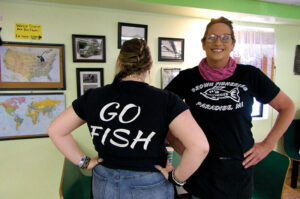 For fresh whitefish straight from Lake Superior, it’s hard to beat Brown Fisheries Fish House.
For fresh whitefish straight from Lake Superior, it’s hard to beat Brown Fisheries Fish House.
“Grandpa started the business in the 1930s” says Cathy Brown. “Dad started smoking fish in the 1970s.”
In 1992, Tom Brown opened a simple, seasonal restaurant that reminded him of fish shacks in Florida. The star of the menu is deep-fried whitefish caught fresh that morning, with homemade tartar sauce and Coleslaw on the side. If the day’s haul is good, the Fish House is open for lunch and dinner. Otherwise, the kitchen closes when the fish is gone.
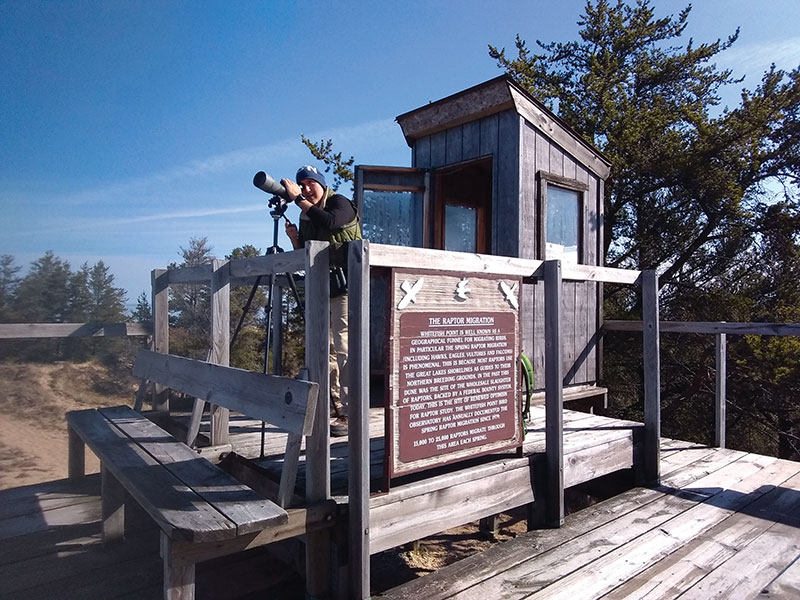
Photo Courtesy of WPBO Facebook
A bird’s Paradise
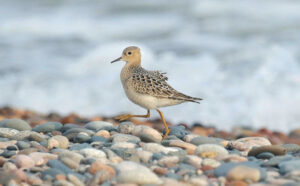
The Whitefish Point Bird Observatory has documented more than 340 species of birds, including raptors, owls, waterbirds and songbirds, making it a popular birding destination for visitors to Whitefish Point.
Photo Courtesy of WPBO Facebook


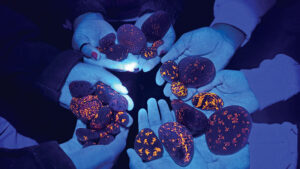 Lighthouses and Yooperlites
Lighthouses and Yooperlites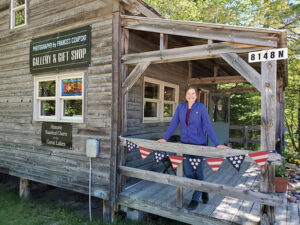 Connect with nature
Connect with nature

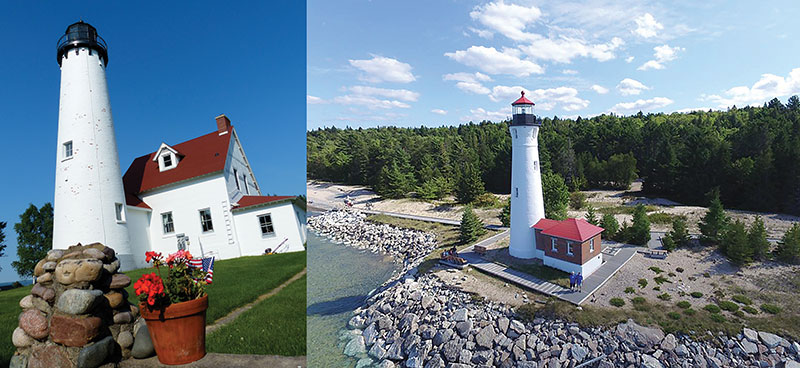
 Birds, berries and root beer Falls
Birds, berries and root beer Falls